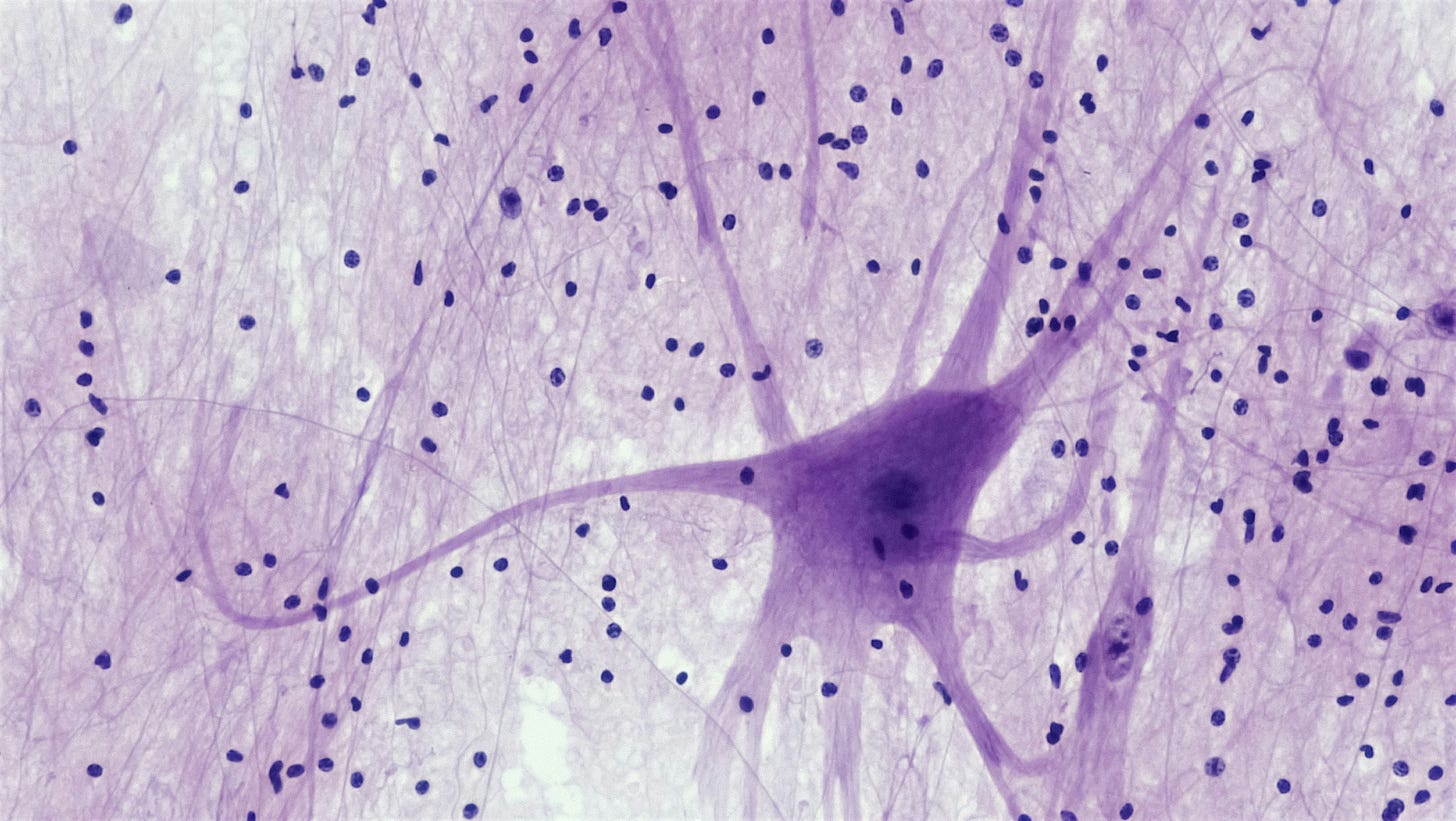Pseudo-Neuro-plasticity
Towards a typology of modes of neuro-plastic change
Since Mike Merzenich’s initial publications in the early 2000s, where he produced evidence of neuroplastic changes in the somatosensory cortex of Rhesus monkeys, the awareness that the human nervous system is neuroplastic, and that changes can be self directed, is one of the most salient and transformational concepts in our sense of agency in improving our lives.
If it is the case that neural development is a use-it-or-lose-it proposition, and that neural networks are both grown and diminished based on their repeated firing, this disproves certain elements of traditional wisdom, like the notion that you cannot teach an old dog new tricks.
Teaching a dog new tricks has relatively little to do with the age of the dog.
It is more a question of whether or not we can help the animal engage in neuroplastic change. I am deeply grateful for the research of Merzenich, as well as as its gifted elaboration by people, such as Dr. Rick Hanson, a friend and colleague who has done an extraordinary amount of work to make this awareness practically actionable.
In a recent conversation with Anat Baniel, developer of NeuroMovement©, and the protégé of Moshé Feldenkrais, it occurred to me that there might be some utility in developing a more refined typology of neuroplastic change.
The typical scenario that Merzenich was describing, and which the notion of self- directed neuroplasticity addresses, is the creation of novel neural pathways through new behavioral repertoire. While there is incontrovertible evidence that this kind of neurogenesis occurs regularly, that neurons are sprouting new dendritic connections all the time, and that this process is trainable, there are other ways to elicit functional changes in neurological coordination that result in neuroplastic change, but that do not involve the growth of new neural connections.
Since a number of these could be construed functionally as neuroplasticity, but since their mechanism is quite different from neurogenesis, it seems worthwhile to me to elaborate some of the mechanisms we have noted in our work that lead to changes that are functionally neuroplastic, but whose mechanism is not the genesis of novel neurology.
COMING OUT OF SHUTDOWN
One of the most common clinical autonomic phenomena that we observe, that leads to changes that are clearly functionally neuroplastic, without new neuronal growth, occurs when there is a shift in the organism out of either a globalized or localized shutdown state. The functional and subjective correlates of this experience are a return of range of neurological function, which can include motion, interoception, proprioception, equilibrioception (vestibular sense), sensory, and motor components. The shutdown state, the most severe life threat state in mammals, occurs when an organism, either due to exogenous or endogenous factors, neurocepts life threat.
When this happens, among a variety of neurological responses in the autonomic nervous system, there is the release of endogenous enkephalins, which selectively target central-pattern generating (CPG) interneuron clusters in the sympathetic ganglia. Depending on how profoundly these ganglia are suffused with inhibitory chemistry, they can functionally shut down both movement and/or sensory pathways. If this chemistry does not flow through, function can be compromised indefinitely.
It is a fairly common occurrence in our clinical work, as the organism resolves these shutdown states for there to be a restoration of function that is clearly neuroplastic, in the sense that novel, or previously available movement, emotional, sensory, and interoceptive capabilities emerge, or return, yet the mechanism here is not neurogenesis.
It is the removal of an endogenous chemical inhibition. If the insult that moved the organism into a shutdown response happens early enough developmentally, the emergence of these new behavioral repertoire could conceivably occur for the first time. This could be interpreted as a neuroplastic development in the sense of neurogenesis, yet in our experience, it is not.
COMING OUT OF FIGHT-OR-FLIGHT
A subtler form of these kinds of transitions occurs when an organism shifts from an autonomic center of gravity in a fight-or-flight response back into a connection state. Although these shifts are more nuanced because they do not typically represent the restoration of motor function, they change the visceral felt sense in the body, and the affective range of the organism.
Again, these changes would broadly be construed as neuroplastic, since they alter neurological functional range. The return of positive affect, the more functional innervation of the facial muscles, the ability for the organism to exhibit reciprocal social connectedness, and respond to social cues, these are all potentially novel behaviors. Again, however, the mechanism is not the traditional neurogenesis. It is rather an autonomic neurological re-coordination.
What both of these categories of example have in common is the transformation of allostatic load in the organism. I have written elsewhere fairly extensively about the degree to which modern humans exhibit characteristics of the phenomenon known as a frog in a pot. The idea here is that if you place a frog into a pot of room temperature water, and turn the temperature up slowly enough, the frog will never jump out, even if you boil it. Our nervous system responds based on jumps in the internal or external environment. If the change is too gradual, our ordinary threat detection mechanisms might not kick in.
Modern humans are under assault from a toxic social environment that undermines the the deepest evolutionary needs of the species lineage history. Modern humans accumulate allostatic load in the same way that a frog in a pot gets hotter and hotter without knowing it. Allostatic load is archived in the body. It has no other place to go.
When a healing modality can effectively transform, or exit some of that load, we see changes that are effectively and functionally neuroplastic. Yet, if we want to be precise about mechanism, it is important to distinguish these from the more classical examples of neuroplasticity, where new neural growth is involved.



